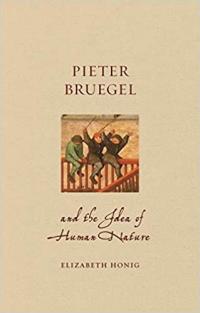Elizabeth A. Honig

Professor, Northern European Renaissance Art , Art History and Archaeology
eahonig@umd.edu
4216 Parren J. Mitchell Art/Sociology Building
Get Directions
Education
Ph.D., , Yale University
Research Expertise
Digital Humanities
Early Modern Studies
Gender
Elizabeth Alice Honig works on the art, literature, and visual cultures of Early Modern Europe. Her interests span the pictorial arts, the built environment, and civic ritual; the art market and practices of collecting; the mobility of objects and imagery; domestic material culture and ideas of dwelling; copying and originality; notions of visuality in literary texts; gender and representation; and historical techniques of painting. She also works within the Digital Humanities and has integrated mapping, network analysis, and digital text analysis into her teaching.
Honig’s first book, Painting and the Market (Yale 1998), concerned the ways in which painting responded to changing notions of value, exchange, and display in the commercial city of Antwerp from about 1550-1625. Her next book, Jan Brueghel and the Senses of Scale (Penn State 2016), focused on a single artist and how he proposed an aesthetic in the years around 1600 that countered those of his colleagues Rubens and Caravaggio in operating at a very small representational scale that demanded a closer visual engagement and mobilized the sense of touch as well as sight. Most recently, in Peter Bruegel and the Idea of Human Nature (Reaktion 2019) she examines Bruegel, Erasmus, and ideas of what it meant to be human in 16th-century Northern Europe. Her current projects concern Nicholas Hilliard and small things in Elizabethan England; and the spaces and experiences of confinement, particularly incarceration, in early modern Europe. Honig maintains a suite of websites about the Brueghel family, the central one being janbrueghel.net. For these and other projects she has received funding most recently from the NSF, IMAF, the Mellon Foundation, CITRIS, the Townsend Center, and the Berkeley Digital Humanities program.
Honig’s graduate students have worked on a diverse range of topics in the arts of The Netherlands, England, Spain, Germany, and the New World; they study painting, architecture,
pageantry, costume, and urban planning; violence, propaganda, devotion, repetition, identity, and failure. Before coming to Maryland, Honig taught at Tufts University and at the University of California, Berkeley and held visiting positions at universities in Leiden and Utrecht.
Publications
Economic Histories of Netherlandish Art
State-of-the-field article surveying the economic histories of Netherlandish art.
Author/Lead: Elizabeth A. HonigContributor(s): Tony Cui
Non-ARHU Contributor(s): Jessica Stevenson Stewart
This state-of-the-field article surveys the economic histories of Netherlandish art. Tracing major contributions by scholars following in the footsteps of Michael Montias, we present the developments of art historical econometrics and consider the evolving ways in which economic analyses address topics such as supply, demand, price, labor, and form. We show the various applications of economic methods and pay particular attention to the interrelations between quantitative research and other modes of inquiry: archival, technical, biographical, stylistic, digital, regional, global, and so forth.
Thinking through Data in the Humanities and in Engineering
This article considers how the same data can be differently meaningful to students in the humanities and in data science.
Author/Lead: Elizabeth A. HonigContributor(s): Christian Cloke, Quint Gregory
Non-ARHU Contributor(s): Deb Niemeier
This article considers how the same data can be differently meaningful to students in the humanities and in data science. The focus is on a set of network data about Renaissance humanists that was extracted from historical source materials, structured, and cleaned by undergraduate students in the humanities. These students learned about a historical context as they created first travel data, and then the network data, with each student working on a single historical figure. The network data was then shared with a graduate engineering class in which students were learning R. They too were assigned to acquaint themselves with the historical figures. Both groups then created visualizations of the data using a variety of tools: Palladio, Cytoscape, and R. They were encouraged to develop their own questions based on the networks. The humanists' questions demanded that the data be reembeded in a context of historical interpretation—they wanted to reembrace contingency and uncertainty—while the engineers tried to create the clarity that would allow for a more forceful, visually comprehensible presentation of the data. This paper compares how humanities and engineering pedagogy treats data and what pedagogical outcomes can be sought and developed around data across these very different disciplines.
Read More about Thinking through Data in the Humanities and in Engineering
Pieter Bruegel and the Idea of Human Nature in the Renaissance
A book that considers, through the viewpoints of Pieter Bruegel and Erasmus of Rotterdam, how people in the Renaissance thought about human nature.
Author/Lead: Elizabeth A. Honig
Read More about Pieter Bruegel and the Idea of Human Nature in the Renaissance
Jan Brueghel and the Senses of Scale
A monumental examination of an extraordinary artist, this book reconsiders Brueghel’s paintings and restores them to their rightful place in history.
Author/Lead: Elizabeth A. Honig
Painting and the Market in Early Modern Antwerp
How the art of painting responded to the conditions of a new market-based economy.
Author/Lead: Elizabeth A. Honig
Read More about Painting and the Market in Early Modern Antwerp

